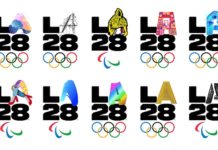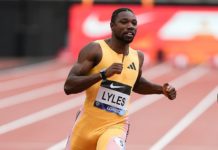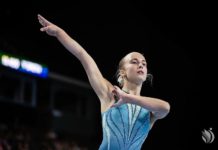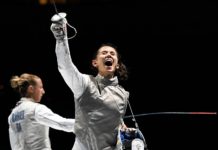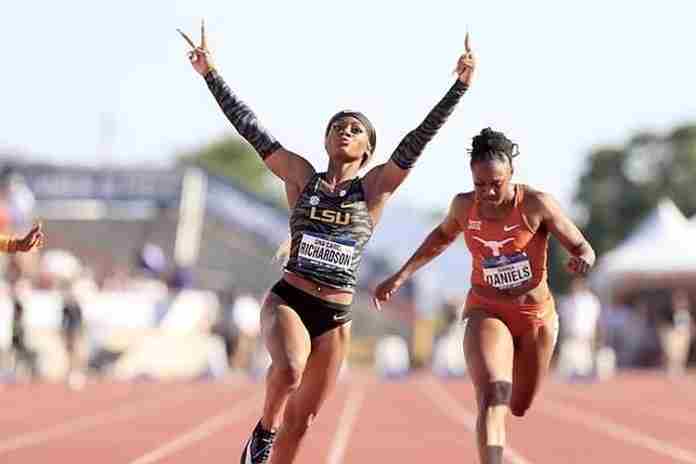While the coronavirus has brought collegiate sports to a standstill, the off-the-field activity has hardly slowed, with the NCAA Division I Council Coordinating Committee making a critical announcement last Wednesday.
In the face of direct requests from five conferences for relief from, among other things, Division I scholarship requirements, football attendance minimums and the number of sports participated in to be in Division I, the Division I CCC voted only to allow waivers for one year of:
● “Schools to provide less than the currently legislated minimum financial aid requirements to maintain membership in Division I. …
● “Reclassifying schools to count as Division I opponents in the first year of the reclassification process, whether or not the school meets Division I scheduling requirements.
● “Basketball and football student-athletes to participate in currently defined summer athletic activities without being enrolled in summer school.”
There were some other technical adjustments to recruiting rules, but no reply to the request from the Group-of-5 conferences and 22 small leagues to allow schools to drop below the requirements to field teams in 16 sports for a period of up to four years (asked by the Group-of-5 conferences) or two years (the other 22 conferences).
(The Group-of-5 conferences include the American Athletic Conference, Mountain West Conference, Mid-American Conference, Sun Belt Conference and Conference USA. The other 22 conferences include all other Division I conferences outside of the big five: Atlantic Coast, Big 10, Big XII, Pac-12 and Southeastern.)
This is crucial to maintaining participation in the many other NCAA sports – almost all of which are part of the Olympic sports program – and which especially includes every women’s sports except perhaps basketball, which does generate some revenue (more on this below).
There was considerable pushback to the request of the conferences, including a passionate letter from 17 coaches associations, representing baseball, equestrian, field hockey, golf, gymnastics, ice hockey, lacrosse, rifle, soccer, softball, swimming & diving, tennis, volleyball, water polo and wrestling, that included:
“Reducing the minimum sports sponsorship requirement that would open the door to eliminating sports should not be an option.”
(The U.S. Track & Field and Cross Country Coaches Association was not a signatory to this letter.)
So as of now, the requirement to field 16 sports to be part of Division I still stands.
The caveat in all of this, of course, is whether there will be a college football season. Way back in 1929, the Carnegie Foundation reported that “Football carries the bulk of the monetary burden” and later the same year, Big 10 commissioner John L. Griffith noted:
“Those who charge college athletics are commercialized think only in terms of football. Football is the only one of 14 intercollegiate sports that has any considerable earning power, and actually supports the remaining 13.”
In 2017, BusinessInsider.com reviewed the finances of the 127 Division I schools that play football and found that:
“While the average school generates $31.9 million in football revenue each year, the next 35 sports on average generate $31.7 million combined each year.”
Compared to the football average of $31.9 million in revenue per year, men’s basketball was second with an annual average of $8.2 million, with men’s ice hockey third ($2.9 million) and women’s basketball fourth ($1.8 million). No other women’s sport generated an annual average total of even $1 million in revenue, although women’s ice hockey was close at $960,466.
If there is no college football, or the season is severely truncated, the NCAA Division I Council will have no choice but to reduce the number of sports required … and that’s bad news for many smaller programs on a lot of campuses. (More on this from last month here.)
At the same time, the NCAA is working through new rules for athlete payments for “name, image and likeness,” with changes slated to be adopted by 31 January 2021. Even with the COVID-19 pandemic, this is continuing, with the NCAA Board of Governors supporting the development of rules for all three divisions based on the 17 April report of its Federal and State Legislation Working Group.
The report focuses mostly on long-overdue changes to rules which deprive students who are on athletic teams from the same rights as other students on campus, for example, a well-known actor or musician, for autographs, endorsements and personal appearances.. But it also notes that today’s technologies create new opportunities which should be allowed:
● Digital content creation and distribution, such as a video series on cooking, nutrition or exercise;
● Social-media influencer marketing.
The suggestion of the working group is to keep the universities and conferences far away from involvement with any of this and prohibitions on any school hiring one of its student-athletes for direct endorsement activities.
Moreover, the working group also sounded a warning concerning support from companies directly involved with universities already:
“When considering those regulations, the working group recommends that the Board of Governors encourage the divisions to consider the following issues in particular: …
“(2) Whether certain categories of third-party businesses (e.g., athletics shoe and apparel companies) should be precluded from, or have limited participation in, the newly permitted activities, due to their history of encouraging or facilitating recruiting and other rules infractions.”
Exhibit one is the ongoing recruiting payment scandal being pursued by the U.S. Department of Justice. In addition, ESPN reported today (Sunday):
“Attorneys representing Zion Williamson’s former marketing representative and her company have asked the New Orleans Pelicans star to admit that his mother and stepfather demanded and received gifts, money and other benefits from persons acting on behalf of Adidas and Nike and also from people associated with Duke to influence him to sign with the Blue Devils and to wear Nike or Adidas products.”
Looking to the future, the question will be whether universities will be able to obtain equipment and apparel support from companies such as adidas, Nike, Under Armour and others when their “stars” have endorsement deals with others? If this is allowed, look for such companies to simply skip sponsoring schools and just try and sign their top athletes.
Beyond the warning on “shoe and apparel companies,” the working group does not address questions of conflicts between a university team sponsor and an endorsement – perhaps from high school days – by a scholarship athlete. This will need to be addressed in the forthcoming rules for Division I at least.
Like so much else today, these are unpredictable times for collegiate sports and while the future of football, men’s and women’s basketball and some number of other women’s sports to make up the scholarship difference are foreseeably safe, everything else could be on the cutting block.
As it always has in college sports, it’s all about football.
Rich Perelman
Editor
You can receive our exclusive TSX Report by e-mail by clicking here. You can also refer a friend by clicking here.







